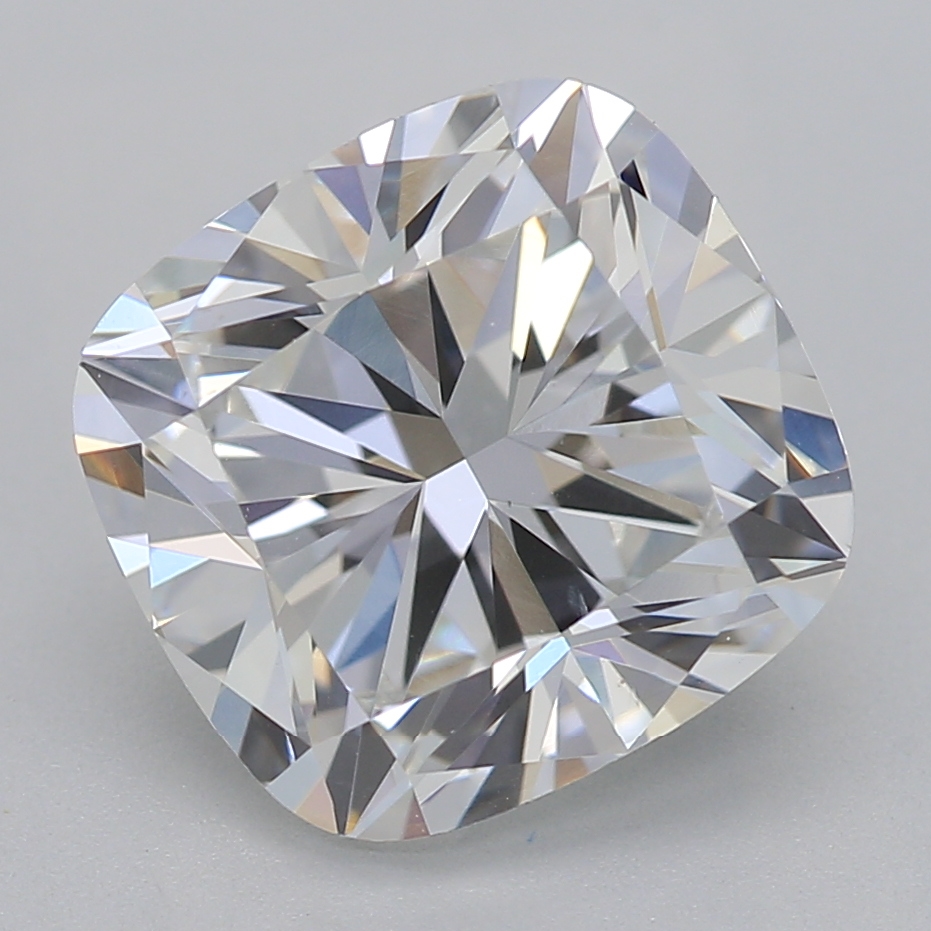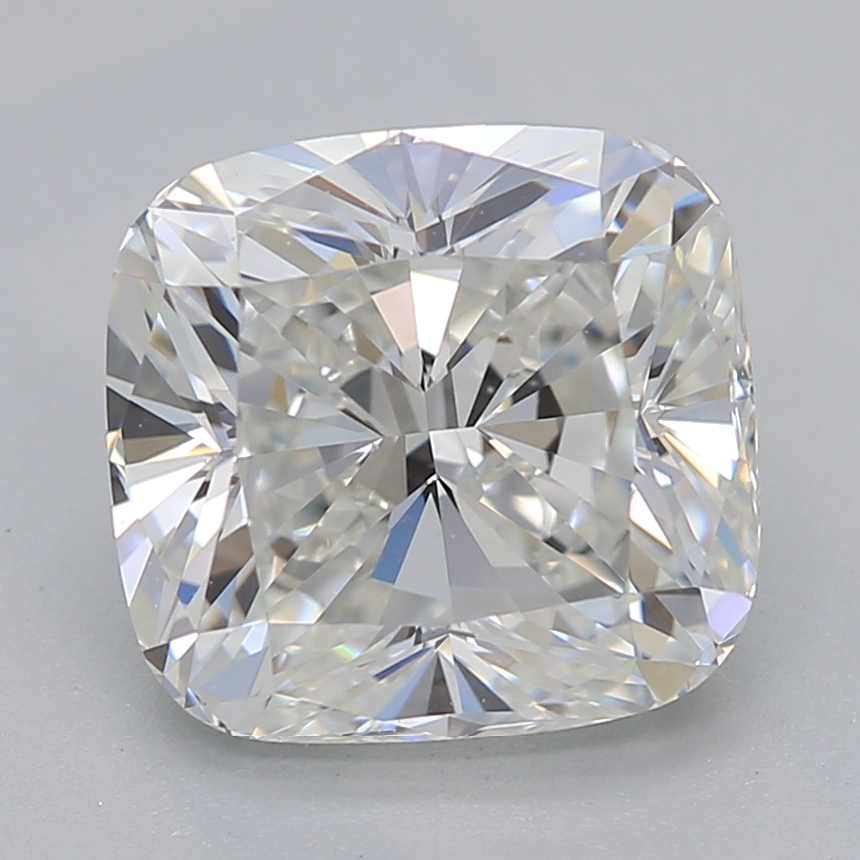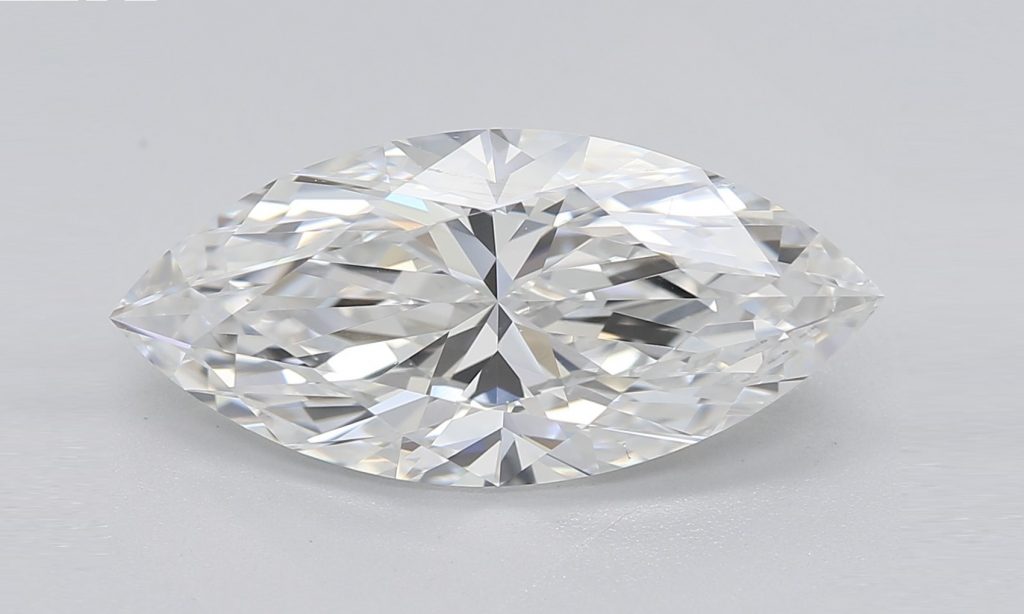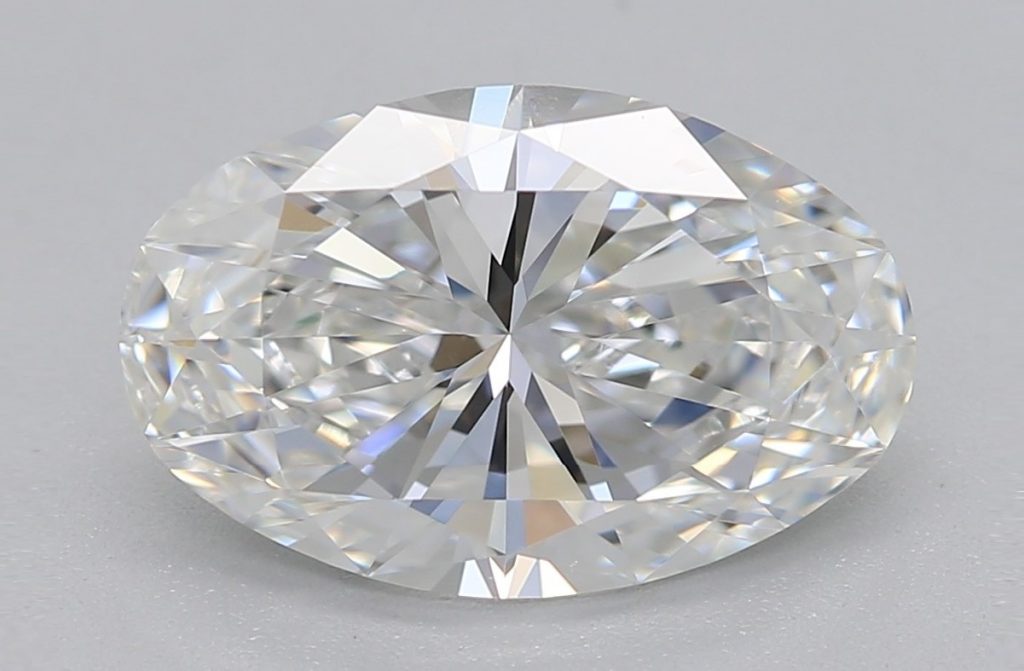Cushion Cut Diamonds: The Ultimate Symbol of Brilliance and Elegance
Key Takeaways
- The Cushion is a popular choice for an engagement ring. It’s generally more affordable, but offers a strong return in the form of high brilliance – and even higher fire.
- As a result of their depth, Cushions tend to look smaller than some other shapes of the same carat weight. Elongated Cushions will look larger than those cut to square proportions, but they are a lot harder to come by and, generally, more expensive.
- The Cushion’s rounded edges and corners make it a more durable shape than, say, the Princess, which can be prone to chipping at the corners if not set properly.
- The Cushion does tend to show color more than some other shapes, so a higher grade might be necessary.
Who would have thought that the hardest substance on earth could be named after one of the softest? This sparkling cut features just the right level of softness to appear luxurious and pillowy – and to charm its way onto the ring fingers of plenty of celebrities, too.

The Cushion cut, while not the most popular choice for engagement rings, remains a firm staple in any jewelry store. It offers a versatile middle ground for shoppers, featuring the brilliant facet pattern in a soft square or rectangular shape. This diamond is capable of giving even the most traditional engagement ring styles a heightened sense of glamour and luxury.
So, is it the one for you?
- The Cut
- What is a Cushion Cut Diamond?
- The Cushion Cut’s History
- Does a Cushion Cut Diamond Sparkle?
- Do Cushion Cut Diamonds Look Bigger?
- Is a Cushion Cut Diamond More Expensive?
- Is the Oval or Cushion Better?
- Is the Cushion Cut Durable?
- Is the Cushion Cut Versatile?
- What’s Special About the Cushion Cut?
- What Does a Cushion Cut Diamond Say About You?
- Choosing a Cushion Cut
- Is Color or Clarity More Important in a Cushion cut Diamond?
- Should a Cushion Cut Diamond be Square?
- How Much is a 1 Carat Cushion Cut Diamond?
- What are the Three Types of Cushion Cut?
- Cushion Cut Guides
- Cushion Cut Diamonds Pros and Cons
- Our Summary
The Cut
While it may look pretty modern to you, the Cushion boasts a rich backstory – and a starring role in some of the world’s most famous jewels – as well as a gorgeous silhouette in engagement rings.
What is a Cushion Cut Diamond?
A Cushion cut diamond combines a brilliant facet pattern with a square shape, though the corners and edges are rounded, giving it a soft, pillowy look (hence the name).
The Cushion cut is one of the most varied styles, available with a range of between 58 and 64 facets, at a ratio of 1.00 to 1.05 for square shapes and 1.10 or greater for rectangular ones.
Cushion cuts have large facets that allow for a greater separation of white light into a spectrum of colors. You might also see a Cushion cut referred to a number of modified cuts with names such as: chunky cushions, broken glass, crushed ice, pillow cut, old miners, square cushions, and rectangular cushions.
The term ‘old miners’ stems from the fact that, prior to the introduction of advanced cutting tools and techniques, many of the Old Miner’s Cuts featured the soft edges and corners now characteristic of the modern Cushion.
The Cushion Cut’s History
The Cushion cut diamond has a very long history, dating back 200 years. For the first century of its existence, it was the ‘go-to’ diamond cut for jewelry designers, and also grew incredibly popular as a shape for other precious gemstones, like rubies and sapphires. Refinements to the original cut over time have led to a renewal in popularity with the Modern Cushion cut.
The famous Hope Diamond and the Yellow Tiffany Diamond are both examples of Cushion shaped diamonds, and celebrities like Kim Kardashian, Ivanka Trump and Jessica Biel have all sported a Cushion diamond as their engagement ring.
Does a Cushion Cut Diamond Sparkle?
Yes, a cushion cut is modelled on the facet pattern of the Round brilliant and, while it cannot sparkle quite to the same standard as this highly popular shape, it puts on an incredible performance of brilliance, fire, and scintillation.
The facets are slightly larger than those found on the Round diamond – and a very open, wide table – meaning that those dazzling flashes of light you may be used to seeing on the Round Brilliant are a little more subdued in the Cushion.
Don’t let this put you off, however. Remember that no diamond shape will sparkle quite as much as the Round, and that all diamonds – particularly those cut with Brilliant facets – are still able to offer mesmeric combinations of fire and brilliance.
Do Cushion Cut Diamonds Look Bigger?
In general, no, cushion cuts will appear a little smaller than differently shaped diamonds of the same carat weight as they are cut with more depth.
In some diamond shapes, more of the diamond’s weight is found in the upper portion which means that, when you look at the stone from above, it will appear bigger. Of course, this illusion is broken when the diamond is viewed from the side, but, once set within a ring, this is much less likely (and much less important).
This shapes include the Marquise and the Pear cuts, both of which hold ideal cut proportions with a much larger surface area. A cushion with a larger surface area would, on the other hand, be way out of proportion and, as a result, give off very little sparkle.
Rectangular Cushions can look a little larger than square shaped Cushion cut diamonds of the same carat weight, since the shape is slightly elongated. Nevertheless, the Cushion is not one of the shapes you should focus on if you want to get the biggest looking diamond possible.
Is a Cushion Cut Diamond More Expensive?
The Cushion cut is one of the more affordable options. Per carat, it will come out cheaper than the Round cut – around 25%, in many cases.
The cushion is still a popular choice, though nowhere near as prevalent as the Round or Oval, so it enjoys a pretty comfortable middle ground between the premium costs of the most popular shapes, and the lower costs of the more unique, less popular shapes.
One thing that can make the Cushion a more expensive choice is the fact that it’s not so great at concealing color, meaning that you’ll want to pay a little more for a slightly higher color grade – around H or I, for instance.
Another is the fact that relatively minor inclusions – inclusions that would not be visible in other shapes – can be visible through the Cushion cut’s larger table, so you might need to go a little higher on the clarity scale than you would with another cut. That said, you still won’t need to invest in one of the top grades, like VVS1 .
Is the Oval or Cushion Better?
This one comes down to personal preference. The Oval’s popularity makes it a little more expensive, but its higher face to depth ratio means that it will look slightly bigger.
Despite the fact that these two cuts follow totally different geometric shapes, they share more similarities than differences. Both are cut with brilliant facets, which means that they generate a high level of sparkle, and both feature softly rounded edges and (in the case of the rectangular Cushion cut) a slightly more elongated shape than the traditional Round.
Nevertheless, their dimensions are what sets them apart. The Oval will, when viewed from above, appear to be a higher carat weight than a comparable Cushion, since the Cushion carries more weight in its lower half.
These differences in depth create different light performances, as the light is refracted through the two diamonds differently. As a result, if you’re on the fence between the two, we’d always recommend going to consult with your jeweler, who can show them to you up close rather than through a screen.
Is the Cushion Cut Durable?
Yes, thanks to its smooth, rounded edges.
Certain cuts, such as the Princess, are a little more vulnerable to damage as a result of their precisely pointed corners and edges. The Cushion, however, is intentionally rounded and smooth, enjoying a comfortable middle ground between the more angular Princesses and Radiants, and the softer Ovals and Rounds.
As a result, it’s pretty safe from chipping, and will prove durable even in the more delicate ring settings, such as the Four Prong solitaire setting.
Is the Cushion Cut Versatile?
Yes, the Cushion cut looks beautiful in any ring setting – particularly when as much of the diamond is left open to the light as possible.
A classic four-pronged solitaire, or this Cushion Cut Cathedral Engagement Ring, both create the perfect opportunity for you to put the beauty of the shape front and center, and to maximize the diamond’s sparkle.
Alternatively, pairing it with the extra glitter of a pavé shank and halo means that you get to make the most of the opulence of the cut, and create something that wows from all angles in even a modest ray of light.
So, in short, what we’re saying is this: the cushion cut will go with just about any ring setting you could possibly choose, and it will be sure to create a stir.
What’s Special About the Cushion Cut?
Cushion cuts usually have better fire than cuts like the Round. This is the special appeal of this particular cut.
Fire refers specifically to the colored flashes of light that occur alongside brilliance, which refers to the white flashes of light. These colorful sparkles are highly coveted by wearers for their magical, lively performance as the light source moves over the surface of the stone.
It also occupies a strong middle ground between the popular (though more expensive) Round cut diamond, and the much more rigid square shape of the Princess cut. With its softly curved edges and rounded corners, it offers a pleasing alternative to two highly popular shapes.
What Does a Cushion Cut Diamond Say About You?
The Cushion cut is both traditional and modern, strong, and soft, and highly luxurious. It’s a great match for anyone who has many sides to their personality and style.
Yes, the Round cut seals the deal for anyone who prefers to stick with tradition – and get the most sparkle possible out of their diamond – but the Cushion makes it possible to put a slightly more modern spin on your ring design, without straying too far from the classic shape created by the Round cut.
For instance, this Cushion Cut Solitaire puts a fresh, though subtle, spin on the traditional Round cut solitaire engagement ring we are all used to seeing, while opting for something a little more ornate – like this Cushion Cut Halo in Rose Gold brings out the lavish, plush shape of the cut and offers you the chance to give your bride-to-be something
Choosing a Cushion Cut
The Cushion cut varies more than other shapes, so personal choice will play a big part in choosing a particular cushion diamond. They also retain a diamond’s color quite well, making it a popular choice among those looking to create unique engagement rings with fancy colored diamonds.
It also looks fantastic in most all settings, allowing for personal style to play a large role.
Is Color or Clarity More Important in a Cushion cut Diamond?
While both are important, color is a little more complicated in a Cushion cut diamond.
Despite the fact that the Cushion cut is a great choice for those who are looking specifically for fancy colored diamonds, this same attribute can represent something of a hurdle to the majority of shoppers looking for clear diamonds.
Then again, when it comes to clarity and color, the intention is the same for shoppers looking at the Cushion as it is for any other cut: find something eye clean, and with no discernible color. Yes, you might have to settle for a grade one step higher than someone looking at another cut needs to settle for, but it’s the best way to take full advantage of the beauty of this cut.
Should a Cushion Cut Diamond be Square?
No – both the square and rectangle are popular shapes, and look stunning in the right engagement ring setting.
The square is a little more popular than the rectangle shape – and, as a result, a little more common – but both exemplify the sumptuous appeal of the Cushion cut.
How Much is a 1 Carat Cushion Cut Diamond?
1 carat prices Prices can range from $,1000 (for a very low quality stone) to $3,000+.
Remember that more factors contribute to a diamond’s value than weight alone, which is why there is so much discrepancy between those two prices mentioned above. The diamond’s cut quality, clarity, color – and other factors like fluorescence – can mean differences of hundreds, if not thousands, of dollars. As always, you should always avoid any diamond that seems to be ‘too good to be true’.
What are the Three Types of Cushion Cut?
Modern cuts have one of three pavilion patterns to choose from, as you can see below:

Three Pavilion Patterns – Modified, Modified Lightly, Brilliant
Cushion Cut Guides
The following cut, color and clarity guides should be taken into consideration when choosing a Cushion cut diamond:
Square Cushion Cut Diamond Cut Guide
The cut attributes of a diamond contribute to its sparkle, brilliance, and bling. Most knowledgeable buyers would choose attributes from the Excellent – Very Good columns.
| Excellent | Very Good | Good | Fair | Poor | |
| Table % | 60 – 65.9 | 58 – 59.9 or 66 – 69.9 | 56 – 57.9 or 70 – 71.9 | 54 – 55.9 or 72 – 73.9 | <53.9 or >74 |
| Depth % | 63 – 67.9 | 58 – 62.9 or 68 – 69.9 | 56 – 57.9 or 70 – 70.9 | 54 – 55.9 or 71 – 73.9 | <53.9 or 74 |
| Girdle | Very Thin to Slightly Thick | Very Thin or Thick | Very Thin or Very Thick | Extremely Thin or Extremely Thick | |
| Culet | None | Very Small | Small | Medium | >Medium |
Square Cushion Cut Diamond Length-to-Width Guide
A classic Cushion cut has a length-to-width ratio of 1.00.
| Excellent | Very Good | Good | Fair | Poor | |
| Square | 1.00 – 1.029 | 1.03 – 1.05 | 1.06 – 1.08 | >1.08 | |
Square Cushion Cut Diamond Symmetry, Polish, Cut and Fluorescence Guide
Our experience suggests that Cut, Symmetry, Polish, and Fluorescence contributes to a diamond’s brilliance so that most buyers will choose Excellent – Very Good and Fluorescence None – Faint.
| Excellent | Very Good | Good | Fair | Poor | |
| Cut | Excellent | Very Good | Good | Fair – Poor | |
| Polish | Excellent | Very Good | Good | Fair – Poor | |
| Symmetry | Excellent | Very Good | Good | Fair – Poor | |
| Fluorescence | None | Faint | Medium | Strong – Very Strong |
Square Cushion Cut Diamond Color Guide
Most buyers prefer size over color hue and will buy a diamond of G color.
| Excellent | Very Good | Good | Fair | Poor | |
| < 0.50 ct. | D – G | H – I | J – K | L – M | > N |
| 0.51 – 1.00 ct. | D – F | G – H | I – J | K | > L |
| 1.00 – 2.00 ct. | D – F | G – H | I – J | K | > J |
| >2.00 ct. | D – F | G – H | I – J | K | > J |
Square Cushion Cut Diamond Clarity Guide
Most buyers prefer size over clarity cleanse and will buy a diamond of SI1 Clarity.
| Excellent | Very Good | Good | Fair | Poor | |
| < 0.50 ct. | FL – VS2 | SI1 – SI2 | I1 – I2 | > I2 | |
| 0.51 – 1.00 ct. | FL – VS1 | SI1 – SI2 | I1 | I2 | > I2 |
| 1.00 – 2.00 ct. | FL – VS2 | SI1 | SI2 | I1 | > I1 |
| >2.00 ct. | FL – VS2 | SI1 | SI2 | I1 | > I1 |
Rectangular Cushion Cut Diamond Cut Guide
The cut attributes of a diamond contribute to its sparkle, brilliance, and bling. Most knowledgeable buyers would choose attributes from the Excellent – Very Good columns.
| Excellent | Very Good | Good | Fair | Poor | |
| Table % | 60 – 65.9 | 58 – 59.9 or 66 – 69.9 | 56 – 57.9 or 70 – 71.9 | 54 – 55.9 or 72 – 73.9 | <53.9 or >74 |
| Depth % | 63 – 67.9 | 58 – 62.9 or 68 – 69.9 | 56 – 57.9 or 70 – 70.9 | 54 – 55.9 or 71 – 73.9 | <53.9 or 74 |
| Girdle | Very Thin to Slightly Thick | Very Thin or Thick | Very Thin or Very Thick | Extremely Thin or Extremely Thick | |
| Culet | None | Very Small | Small | Medium | >Medium |
Rectangular Cushion Cut Diamond Length-to-Width Guide
A classic Cushion cut has a length-to-width ratio between 1.15 – 1.20.
| Excellent | Very Good | Good | Fair | Poor | |
| Rectangular | 1.15 – 1.20 | 1.10 – 1.14 or 1.21 – 1.30 | 1.08 – 1.09 or 1.31 – 1.50 | <1.08 or 1.50> | |
Rectangular Cushion Cut Diamond Symmetry, Polish, Cut and Fluorescence Guide
Our experience suggests that Cut, Symmetry, Polish, and Fluorescence contributes to a diamond’s brilliance so that most buyers will choose Excellent – Very Good and Fluorescence None – Faint.
| Excellent | Very Good | Good | Fair | Poor | |
| Cut | Excellent | Very Good | Good | Fair – Poor | |
| Polish | Excellent | Very Good | Good | Fair – Poor | |
| Symmetry | Excellent | Very Good | Good | Fair – Poor | |
| Fluorescence | None | Faint | Medium | Strong – Very Strong |
Rectangular Cushion Cut Diamond Color Guide
Most buyers prefer size over color hue and will buy a diamond of G color.
| Excellent | Very Good | Good | Fair | Poor | |
| < 0.50 ct. | D – G | H – I | J – K | L – M | > N |
| 0.51 – 1.00 ct. | D – F | G – H | I – J | K | > L |
| 1.00 – 2.00 ct. | D – F | G – H | I – J | K | > J |
| >2.00 ct. | D – F | G – H | I – J | K | > J |
Rectangular Cushion Cut Diamond Clarity Guide
Most buyers prefer size over clarity cleanse and will buy a diamond of SI1 Clarity.
| Excellent | Very Good | Good | Fair | Poor | |
| < 0.50 ct. | FL – VS2 | SI1 – SI2 | I1 – I2 | > I2 | |
| 0.51 – 1.00 ct. | FL – VS1 | SI1 – SI2 | I1 | I2 | > I2 |
| 1.00 – 2.00 ct. | FL – VS2 | SI1 | SI2 | I1 | > I1 |
| >2.00 ct. | FL – VS2 | SI1 | SI2 | I1 | > I1 |
Cushion Cut Diamonds Pros and Cons
Pros
Cushion cuts have a timeless and classic appeal that make them a desirable cut – and one that will continue to impress even as trends and fashions come and go. A cushion diamond also has the most fire, with flashes of colorful light dazzling everyone who looks down on it. Finally, it’s versatile, and looks great within any ring setting.
Cons
A con of the cushion is the smaller face size than most shapes, due to the deeper cuts. Other diamonds of the same carat weight will appear larger than the Cushion. Also, the diamond’s ability to retain color represents a slight disadvantage to those shopping for clear diamonds.
Our Summary: Is the Cushion Cut Good?
Absolutely. The Cushion is luxurious and versatile, and offers shoppers a great though subtle way of putting a modern spin on a classic.
It’s also nowhere near as popular than the Round cut diamond, meaning that it is not only more affordable per carat, but it’s great for anyone looking to pick out something a little more unique without going too far in the opposite direction.
What’s more, you don’t miss out on too much of the brilliance or fire offered by the Round, so there’ll be no dashed hopes when you’re already down on one knee, and the light first hits the surface of your ring.
If you’re still on the fence, however, then it’s a great idea to go and see a Cushion cut in person. Diamonds always look totally different on a screen to how they look in real life, and the chances are that you’ll feel much clearer about your decision after seeing a Cushion diamond shimmering in person.
Hand-Selected Cushion Cut Diamonds




Apr 18, 2021 By Willyou.net
Marquise Cut Diamonds; Discover the Unique Beauty and Elegance

Oct 3, 2021 By Willyou.net
Discover the Most Expensive Diamond Cut: A Guide








